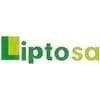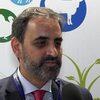
Content sponsored by:
LIPTOSA
Influence of microminerals on the eggshell quality
Published: January 18, 2023
Source : Daniel Diaz, Veterinarian, Area Manager Latam
The egg is the most sensitive food for human, which require the minimumtransformation process form the farm to the table; and the one that is the most biologically active and without having undergone sterilisation processes. To preserve the optimal properties of the egg, it is crucial to ensure a good quality of the eggshell.
The parameters of eggshell quality: resistance, increased porosity, fragility and the presence of malformations or fissures will affect the physical and microbiological quality of the egg.
The average values ofeggshell damage or malformations represent approximately 6% of total egg production and, in many cases, these breakages increase the percentage of dirty eggs or not suitable ones for its commercialization.
The eggshell is made of a complex structure of different layers. The assembly of these layers takes place in the shell gland (uterus). The calcification process of the eggshell is the longest process of the egg formation, it lasts approximately 18 hours, ending approximately 1 hour before oviposition.
Structure of the egg
The eggshell layers from the inside out, consist of the organic membranes, the mineral layer, and the cuticle that covers the outer surface of the eggshell.
Eggshell organic membranes are a network of collagen fibres (type X), glycoproteins, and proteins. There is a thinner internal organic tissue, located over the limiting pellicle that surrounds the albumen, and a thicker outer membrane that contain organic nucleation sides on which the mineral layer is built. When this nucleation is dispersed and larger due to a lower glycoprotein density, the eggshell formed will have a higher porosity and fragility.


In the inner part of the mineral layer are the mammillary knobs. The thickest part of the mineral layer is made up of columnar crystals of precipitated calcium carbonate. Ensuring a correct structure from organic membrane to the columnar crystal is very important to get a good strength of the eggshell. All the necessary nutrients must be supplied through the feed, and any deficiency will compromise the eggshell quality.
Finally, the outer part of the eggshell is covered by the cuticle, a very thin organic film which covers the pores, protecting the permeability of the shell and preventing the entry of bacteria through the shell (Muñoz et al., 2015). The cuticle contains proteins (lysozyme) and lipids with powerful antimicrobial activity. That is why European Regulations do not allow the washing of eggs, because this practice damage and even remove this protective component.
Factors affecting eggshell quality
In general, the eggshell quality depends on factors such as the age of hens, genetics, environmental conditions (light program, temperature, humidity…) and nutrition.

With the increase in the age of the hens, there are remarkable changes in the structural characteristics of the eggshell (the mammillary layer density and the join between the organic and mineral membrane decrease; the size of calcite deposits increases; the thickness of the cuticle decreases) that affect the mechanical properties and the quality and integrity of the eggshell. The heat stress reduces the carbonate level in blood and the activity of carbonic anhydrase and reduces both food intake and the absorption of necessary nutrients.
Regarding nutritional factors, the calcium, phosphorus, and vitamin D3 levels are the most relevant, but others like the intestinal health or a better micronutrients absorption could have a great impact in the eggshell formation. Optimal levels of Ca, P, vitamins, and trace minerals (Mn, Zn, Cu) are crucial to keep the immune health status of the hen, store enough calcium in the medullary bone, and maintaining the function of the oviduct tissues during the long laying period as well as to maintain a good eggshell quality.
The importance of macrominerals
Trace minerals act as activators or components of enzymes involved in eggshell synthesis or directly interact with calcium crystals during eggshell generation, which affects the quality of the eggshell. Cu, Mn, and Zn microminerals act as promoters and components of important enzymes such as lysyl oxidase (Cu) and alkaline phosphatase (Mn) for eggshell membrane development, glycosyltransferase (Mn) is involved in the development of nucleation sites for the growth and orientation of calcite crystal, and carbonic anhydrase (Zn) catalyses the production of HCO3 for crystal calcium deposition on the outer membrane.
Considering all the above, a proper balance and good absorption of microminerals in the laying feed is critical.Zinc is essential for immune system, but it is also an important co-factor for the enzyme responsible of calcium carbonate deposition; a low zinc absorption may result in weak eggshell. Manganese activates the enzyme responsible of organic layer, a poor structure of the inner membrane results in a deficient structure of calcite crystal of inorganic eggshell. Copper take part of the enzymes responsible of collagen formation, and deficiency in copper assimilation is associated with defects in the shape of the egg (as it passes through the oviduct,) and consequently with eggshell quality problems.

Low absorption of microminerals from the diet can increase the shell defects, mainly fragility and lack of pigmentation. Therefore, a successful absorption of Cu, Mn and Zn is necessary for proper eggshell development, and in case of zinc, an extra supplementation during heat stress period helps to mitigate the lower activity of carbonic anhydrase.

Antagonisms between different inorganic sources of minerals (macro and microminerals) could lessen their own absorption, leading to an excessive supplementation of inorganic minerals in order to solve the ''deficiencies'' but, on the contrary, exacerbating the main problem.
The limits of inclusion in feed for some minerals is not related with the absorption by the animals, so it will depend on the bioavailability of the mineral source to cover their needs. The maximum level of zinc, copper, and manganese for poultry feed in EU are 120 ppm, 25 ppm and 150 ppm, respectively. The use of inorganic sources may not be enough by the low absorption and reaction with other ingredients, especially calcium and phosphorus in poultry laying feed.
Several trials have reported how organic mineral sources perform better in eggshell quality structure than inorganic ones at the same (or even lower) mineral inclusion levels.
Inorganic minerals can be dissociated in the crop, gizzard, and intestinal tract, resulting in anions more reactive interacting with other nutrients of the diet such vitamins, amino acids, and other minerals. In contrast, organic minerals are not dissociated in the gut and their availability is higher, without interact with other nutrients.
Results
In the results obtained by Qiu, et al 2019 showed that hens fed with organic trace minerals had higher enzyme activities, and a better eggshell ultrastructure than hens fed with same level of inorganic minerals, probably due to higher bioavailability of organic trace minerals.
Results obtained in 26-week-old laying hens at 90% of lay, supplemented with Glyadd minerals (copper, zinc, and magnesium glycinate from Liptosa S.A.) improved eggshell thickness by 3%, and the percentage of rough or deformed eggs was reduced compared to the Control group. In the case of older hens aged by 59-63 weeks, the effect on eggshell thickness was more pronounced (Control 0.333 mm vs Glyadd 0.352 mm).
Figure 1 Effect of Glyadd inclusion in laying feed from 26 to 63 weeks of age on eggshell thickness

The use of Glyadd organic minerals provides a supplementation of glycine in the diet. Glycine is a nonessential amino acid for mammals; but in case of poultry, it is considered as semi-essential, since the production of uric acid is a glycine-dependent pathway and, under low protein level or ideal protein formulation, the supplementation of glycine may help to meet metabolic requirements (Baker 2009).
Glycine may also work as a serine precursor, and it is also a precursor of haemoglobin (together with Fe); Likewise, Glycine is involved in the synthesis of glutathione (GSH) for the antioxidant defence and nutrient metabolism, creatine (Cr) and bile salts in energetic metabolism, and in the excretion of uric acid (UA).
Inclusion levels in diets of 1% glycine or 1.6% glycine+serine can improve feed intake, egg weight, and fat digestibility. Under heat stress or tropical weather, the reduction in protein level and the amino acid-based formulation it would be important to consider the levels of glycine and serine in the formula.
*Certain information associated with products, their composition and claims may be different depending on the geographical region and may not be applicable in all countries. Liptosa reserves the right to adapt to the requirements and legislation in each case.
The information and technical recommendations provided herein are based on Liptosa's current knowledge and experience.
Liptosa reserves the right to update the information and arguments contained in this platform, as well as to make any changes to this information or recommendation at any time, without prior or subsequent notice.
Related topics:
Mentioned in this news release:

Recommend
Comment
Share

Would you like to discuss another topic? Create a new post to engage with experts in the community.



